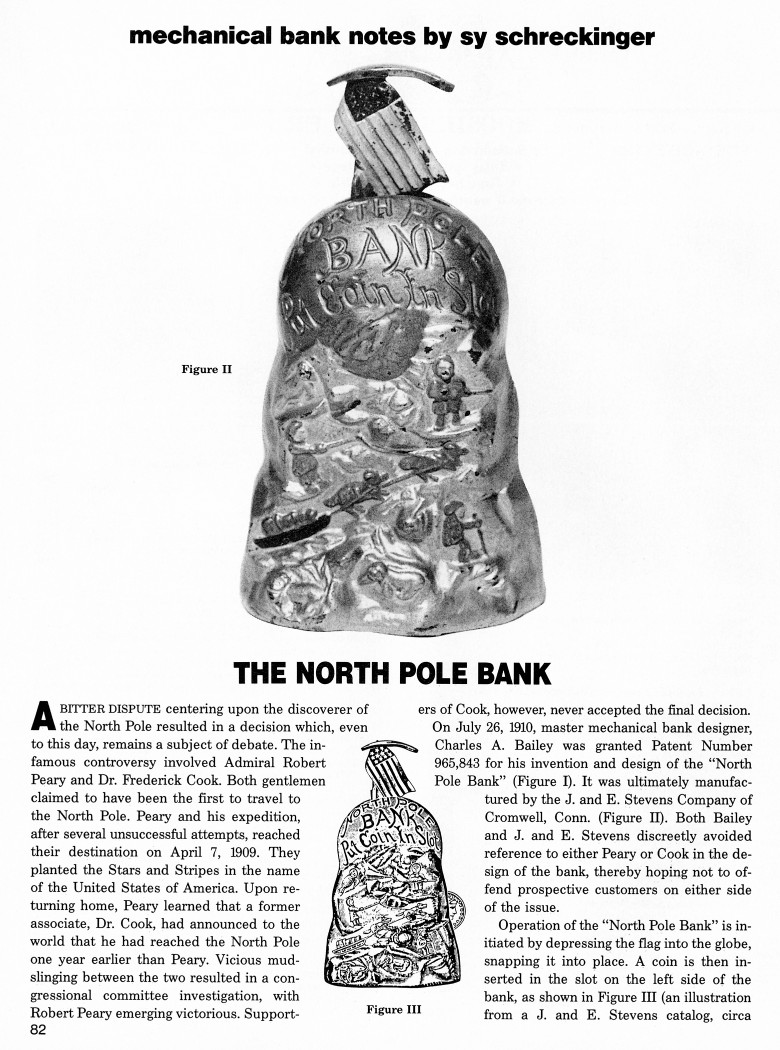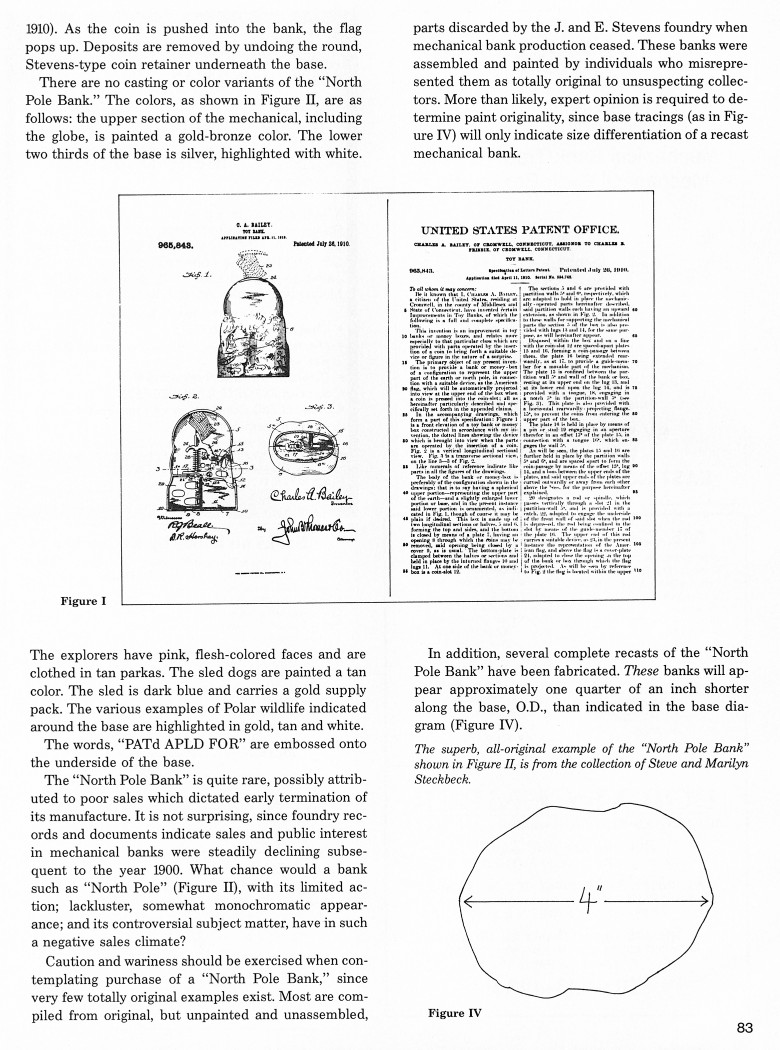|
The North Pole Bank
by Sy Schreckinger – ANTIQUE TOY WORLD Magazine – February,
1995
A bitter dispute centering upon the discoverer
of the North Pole resulted in a decision which, even to this day, remains
a subject of debate. The infamous controversy involved Admiral Robert
Peary and Dr. Frederick Cook. Both gentlemen claimed to have been the
first to travel to the North Pole. Peary and his expedition, after several
unsuccessful attempts, reached their destination on April 7, 1909. They
planted the Stars and Stripes in the name of the United States of America.
Upon returning home, Peary learned that a former associate, Dr. Cook, had
announced to the world that he had reached the North Pole one year earlier
than Peary. Vicious mudslinging between the two resulted in a
congressional committee investigation, with Robert Peary emerging
victorious. Supporters of Cook, however, never accepted the final
decision. On July 26, 1910, master mechanical bank designer, Charles A.
Bailey was granted Patent Number
965,843 for his invention and design of
the "North Pole Bank" (Figure I). It was ultimately manufactured by the J.
and E. Stevens Company of Cromwell, Conn. (Figure II). Both Bailey and J.
and E. Stevens discreetly avoided reference to either Peary or Cook in the
design of the bank, thereby hoping not to offend prospective customers on
either side of the issue.
Operation of the "North Pole Bank" is initiated by depressing the
flag into the globe, snapping it into place. A coin is then inserted in
the slot on the left side of the bank, as shown in Figure III (an
illustration from a J. and E. Stevens catalog, circa 1910). As the coin is
pushed into the bank, the flag pops up. Deposits are removed by undoing
the round, Stevens-type coin retainer underneath the base.
There are no casting or color variants of the "North Pole Bank." The
colors, as shown in Figure II, are as follows: the upper section of the
mechanical, including the globe, is painted a gold-bronze color. The lower
two thirds of the base is silver, highlighted with white. The explorers
have pink, flesh-colored faces and are clothed in tan parkas. The sled
dogs are painted a tan color. The sled is dark blue and carries a gold
supply pack. The various examples of Polar wildlife indicated around the
base are highlighted in gold, tan and white.
The words, "PATd APLD FOR" are embossed onto the underside of the
base. The "North Pole Bank" is quite rare, possibly attributed to poor
sales which dictated early termination of its manufacture. It is not
surprising, since foundry records and documents indicate sales and public
interest in mechanical banks were steadily declining subsequent to the
year 1900. What chance would a bank such as "North Pole" (Figure II), with
its limited action; lackluster, somewhat monochromatic appearance; and its
controversial subject matter, have in such a negative sales climate?
Caution and wariness should be exercised when contemplating purchase
of a "North Pole Bank," since very few totally original examples exist.
Most are compiled from original, but unpainted and unassembled, parts
discarded by the J. and E. Stevens foundry when mechanical bank production
ceased. These banks were assembled and painted by individuals who
misrepresented them as totally original to unsuspecting collectors. More
than likely, expert opinion is required to determine paint originality,
since base tracings (as in Figure IV) will only indicate size
differentiation of a recast mechanical bank.
In addition, several complete recasts of the "North Pole Bank" have
been fabricated. These banks will appear approximately one quarter of an
inch shorter along the base, O.D., than indicated in the base diagram
(Figure IV).
The superb, all-original example of the "North Pole Bank" shown in
Figure II, is from the collection of Steve and Marilyn Steckbeck.
|


